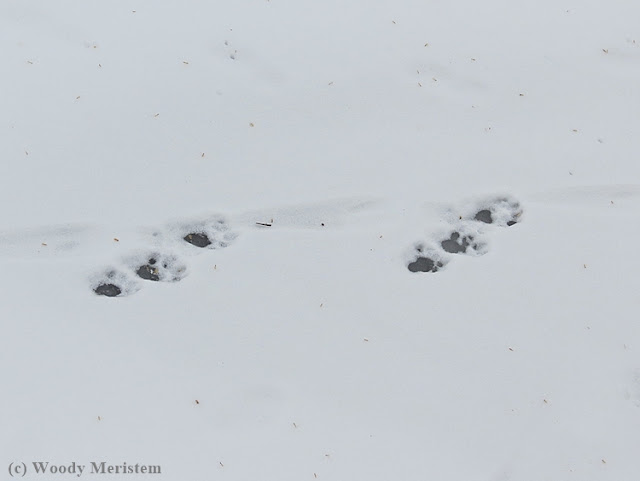Before the arrival of Europeans river otters were found throughout Pennsylvania. But then the traps and firearms of the new arrivals, clearing for agriculture, logging of vast tracts and pollution of streams and rivers by coal mining reduced the otter population until, by 1920, the species was extirpated from all but a small portion of the northeast corner of the state. Otters hung on in the northeast because the soils were largely unsuitable for agriculture, there was no coal to be mined and pollute the streams, and there were large areas of wetlands.
By the 1970s attitudes had changed, trapping and hunting were regulated by seasons and limits, many farms had been abandoned and many streams were cleaner. And so in 1982 efforts began to restore river otter populations; over 20 years 150 otters, trapped elsewhere, were released in suitable habitat in northern and western Pennsylvania. Otters subsequently thrived to the extent that Pennsylvania now has a trapping season for otters.
H and I saw our first Pennsylvania river otter in the 1970s while we were canoeing on a lake in the far northeast of the state, well before reintroduction began. More recently I’ve seen otters much closer to home.
Walking along the river there’s always the chance of encountering a river otter. There are a lot of islands in the river, some quite large and some rather small. Those islands are often overtopped in high water events (better known as floods) and trap floating debris: large trees, logs, branches, docks, … Those piles of debris make ideal denning places for otters to rest or bear their young.
With ice on the river and snow on the island it was easy to see the most obvious sign of an otter’s presence – a slide created by an otter as it literally slid across the surface –
The otter also left tracks showing the typical staggered pattern of an otter’s loping gait –
Returning to the island on another day in hope of seeing the otter I saw another slide. This one led from an opening in the debris pile down to the frozen river and on to open water. After another snowfall, an otter had walked, not loped, up the slide to the opening in the pile –
The otter, or otters, using that island have remained out of sight but on another day an otter was swimming in the river about a mile upstream.
Otters travel widely (a mile is nothing to an otter) perhaps this was the one from the island.







I love otters, but have only seen them in aquariums, where the water area has a glass screen so viewers can see them above and under water. I love how playful they are. These of course are river otters...there are also the sea otters, a much different animal, but also very beautiful.
ReplyDeleteI've never seen an otter but I've seen their slides down into a local creek.
ReplyDeleteThanks for educating me about otters. Glad to hear they are reclaiming their territories.
ReplyDeleteTo judge from their tracks along and into the Hudson River and through the woods for miles (!), there are lots of River Otters in Saratoga County, NY, but in all my decades of woods and waterways exploring here, I have seen an otter's head poking up from the water only once. I do keep hoping. My son has seen them sliding and frolicking on a frozen pond.
ReplyDeleteHello,
ReplyDeleteLove the cute Otter photos. We have seen the Otter's slide trail here years ago. Great post. Thank you for linking up and sharing your post. Take care, have a happy weekend.
Nice photos of Otters. Fascinating!
ReplyDeleteOtters are great fun to watch in the water. You never know where they'll come back up after they've dove down underwater. Love seeing the photos of them in the cold weather.
ReplyDeleteHow awesome to see them for yourself! How cute they are :)
ReplyDeleteFeel free to share at My Corner of the World